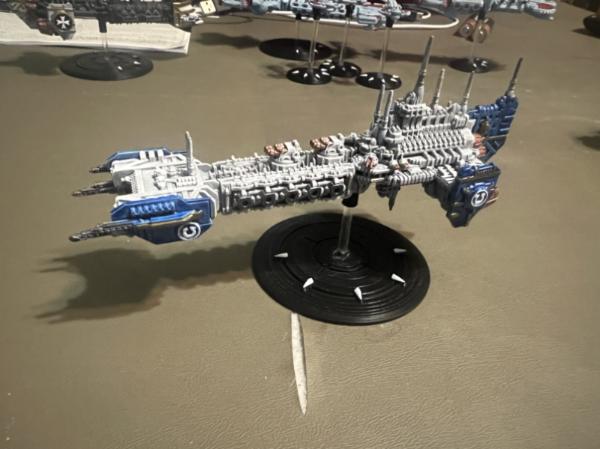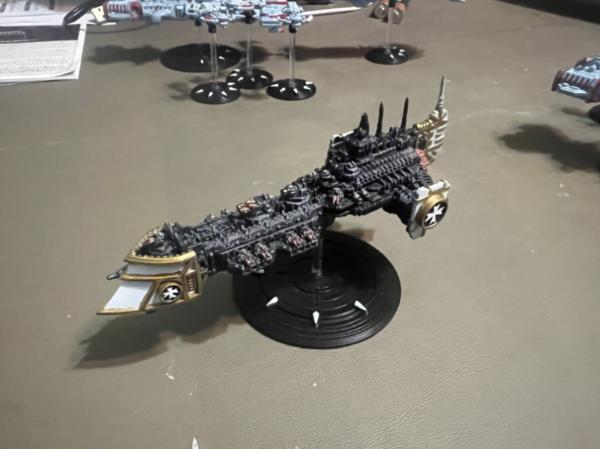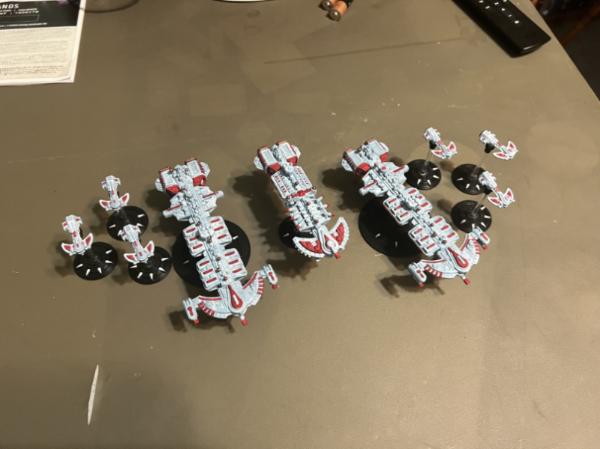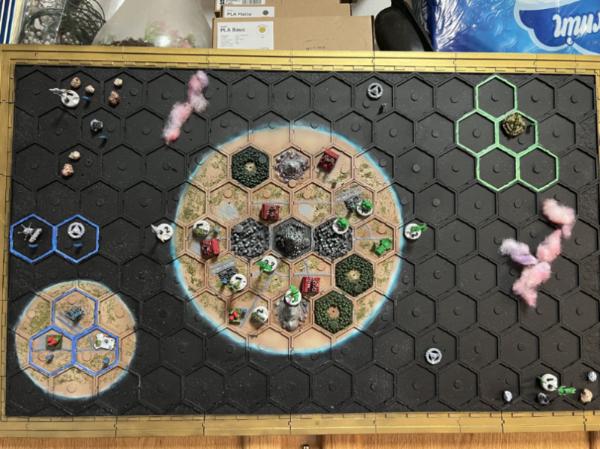Hi all! Here is my draft background for the major points of interest on the campaign map:
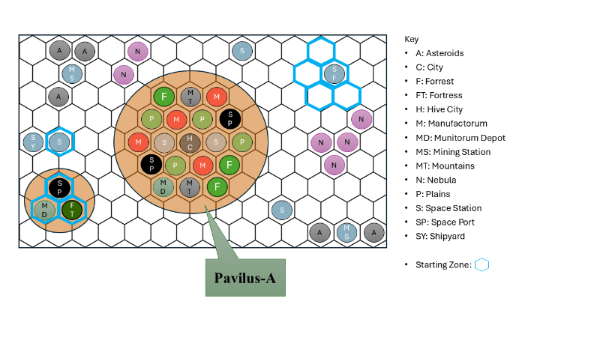 Pavilus Alpha (Pav-A)
Pavilus Alpha (Pav-A): A human colony founded in the distant past, and the center of human civilization in the Cigni-Wolfram system. The largest city on Pav-A, Pavilapolis, has rapidly grown into a full-scale Hive City since the system entered Imperial compliance. From a pre-compliance population of 7 billion, Pav-A now boasts a permanent human population of nearly 24 billion, with nearly a third residing in the Pavilapolis hive cluster. The planet is also home to 4 major manufacturing districts that combined are capable of fully supplying multiple Expeditionary Fleets with everything from bayonets to battle tanks to strike fighters.
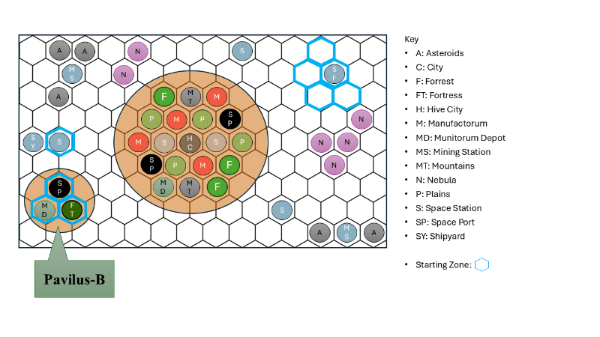 Pavilus Beta (Pav-B)
Pavilus Beta (Pav-B): The smaller of the two planets that comprise the Pavilus Binary system. By nature of its orbital mechanics, Imperial astrogators classify Pav-B not as a moon of Pav-A but rather as a separate planet of its own. Relatively resource-poor compared to its larger cousin, Pav-B was initially set aside as a nature preserve and retreat for the ruling elite of Pav-A. With the arrival of the Imperium and the bottomless appetites of its war machine, Pav-B became a planet-sized military base, and Imperial engineers soon constructed a sprawling space port, millions of acres of training and testing grounds, and enormous bunker complexes to serve as billeting and headquarter facilities.
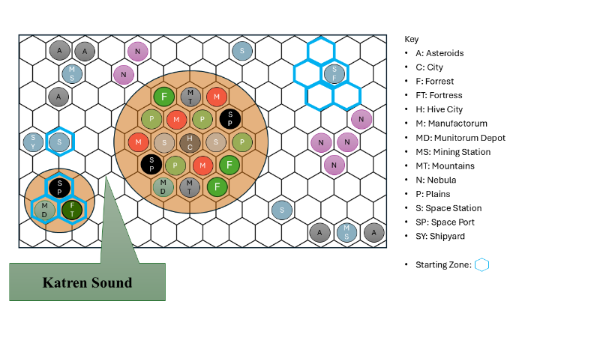 Katren Sound
Katren Sound: The narrow passage of open space between Pav-A and Pav-B. The Sound is typically congested with civilian shipping of all descriptions, plying their trade between Pav-A and the various mining stations and orbital facilities scattered around the system.
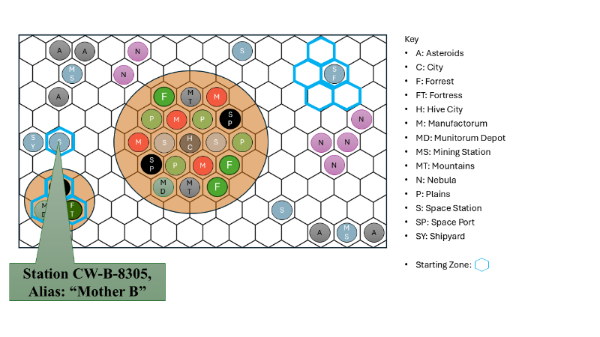 Station CW-B-8305
Station CW-B-8305 (aka “Mother B”): A large military space station in orbit above Pav-B. This station serves as the primary staging point for interface traffic to and from Pav-B, as well as the headquarters for the Imperial Garrison.
 Cavitas Orbital Yard
Cavitas Orbital Yard: The Pavilus Binary’s primary shipbuilding facility. Cavitas Yard’s origins date back millenia, though until the Imperium rediscovered the system and greatly expanded it the yard lacked the ability to build interstellar craft. Now, it is capable of building or repairing vessels all the way up to Battleships. The Cavitas Yards remained extremely busy even after the currents of the Great Crusade moved beyond the Binary, as the vessels it constructed could be swiftly sent forward to the now distant front lines.
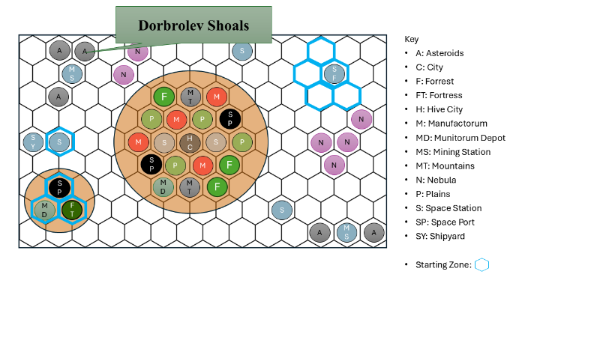 Dorbrolev Shoals:
Dorbrolev Shoals: A large cluster of asteroids particularly rich in the metals and minerals required for munitions production. Their relatively close proximity to the Cavitas Shipyards and Pav-A has made Dorbrolev Shoals a vital source of supply for the system’s industries.
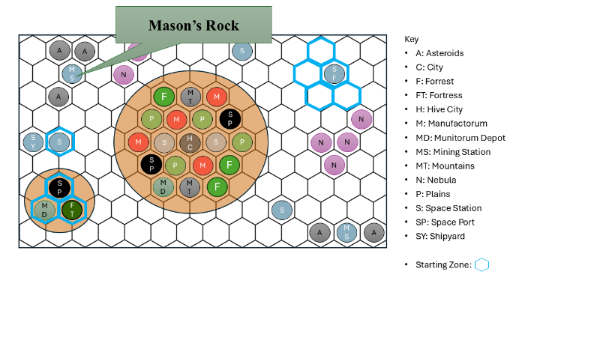 Mason’s Rock:
Mason’s Rock: A large refining and transshipment facility located amid Dorbrolev’s Shoals. This facility is critical to the efficient exploitation of the vast riches contained in the Shoals. The already expansive facilities at the Rock have been scaled up to match the dramatic expansion of the Cavitas Shipyards. In addition to supplying the Yards, an appreciable amount of the materials consumed by the manufactorums on Pav-A can also trace their origins back to the Dorbrolev Shoals, via Mason’s Rock.
Barrett Deeps: A relatively small nebula of various exotic gasses that have collected at one of the Lagrange points between Pav-A and Pav-B. While the Deeps are relatively unremarkable and unimportant, they do represent a moderate hazard to navigation for void traffic passing through the area.
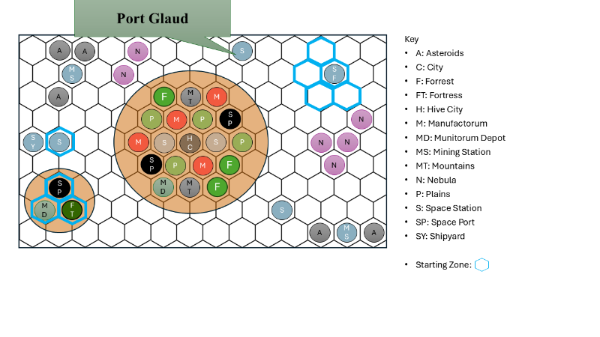 Port Glaud
Port Glaud: An expansive dual use military/civitas space station that was constructed following Imperial Compliance. Port Glaud acts as the primary waypoint for traffic in and out of the Binary, housing the terminal navbeacon for the system. The station is also a key node for intra-system trade, and houses a sizable permanent population of merchants, technicians, and laborers.
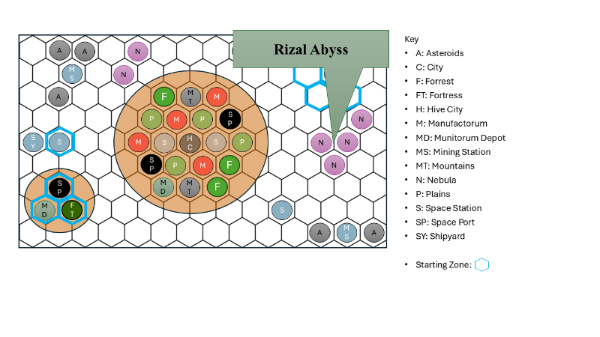 Rizal Abyss
Rizal Abyss: A sizeable nebula on the periphery of the Binary. Prone to dangerous electrostatic discharges and the source of peculiar electromagnetic interference that plays havoc with the shielding systems and sensors of Imperial ships. Historically, the Abyss was a haven for the pirates that once plagued the system, but during Compliance they were hunted to extinction.
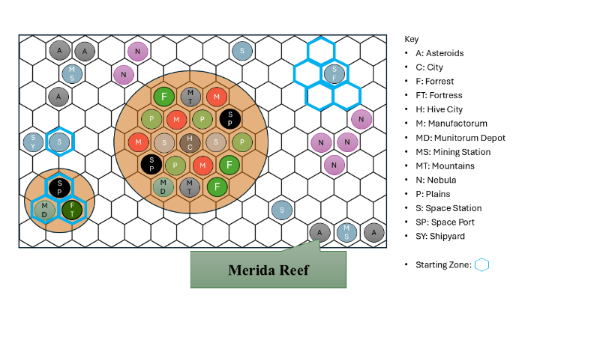 Merida Reef
Merida Reef: A collection of asteroids that lay past the Rizal Deeps. While smaller and poorer than the Dorbrolev Shoals, Merida Reef nonetheless represents a substantial source of raw material, at least in theory. Attempts to exploit what riches the Shoals do contain have been frustrated by the long transit time to Pav-A, and even longer transit to the Cavitas Yards.
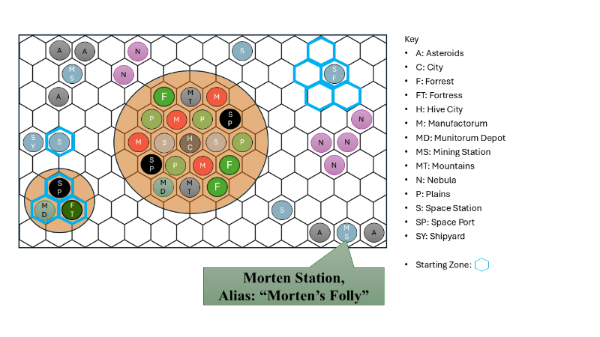 Morten Station (aka Morten’s Folly)
Morten Station (aka Morten’s Folly): A hard-scrabble mining station nestled amongst the Merida Reef. Like Mason’s Rock, Morten acts as the main collection and refining point for the neighboring mining concerns. The station was founded shortly after Imperial Compliance by business magnate Nora Morten, a native of Pav-A. However, due to exploiting Merida Reef being a less profitable enterprise overall compared to the operations in and around Dorbrolev Shoals, Morten Station has struggled to survive as a going concern, let alone flourish. This has led to the station being nick-named “Morten’s Folly.” Despite the nay-sayers, Nora Morten’s descendants continue to sink a not inconsiderable portion of their substantial family fortune into the venture, in the hopes that it will one day become a true rival to Mason’s Rock.
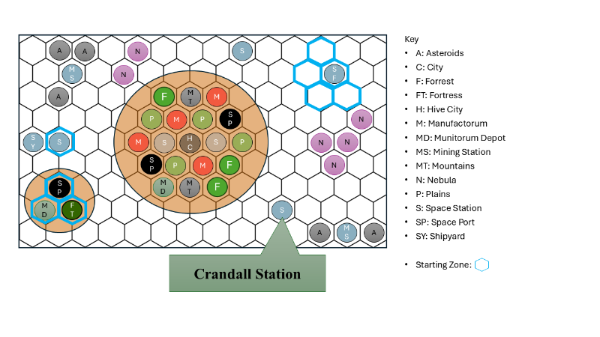 Crandall Station:
Crandall Station: A well-established orbital station above Pav-A. Prior to Compliance, Crandall was the largest orbital station in the Binary, and home to a wide array of research labs, low gravity manufacturing facilities, and trading docks. While it was rapidly eclipsed in size and importance by new Imperial facilities such as Port Glaud and Mother B, Crandall has remained a prosperous and important node in intersystem trade routes. Practically all traffic to and from Morten Station, for example, passes through Crandall Station.

 Recent Posts
Recent Posts











